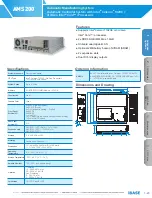
Removing BQD Circuit Breakers
From Panel
1. Disconnect and lock off all power
sources supplying this panel.
2. Remove P1 Panel trim and dead
front.
3. Unscrew the screw connecting the
BQD line bar connection with the
panel bus bar.
4. If CPOD is connected to the BQD
breaker, unplug the CPOD
connector from the data rail
connection, remove the load wire
attached to the CPOD load
terminal and loosen the BQD load
lug to remove the CPOD.
5. Grip the BQD breaker and pull it in
the direction towards the center
of the panel or away from the top
barrier to remove it.
Control POD (CPOD)
Description
CPOD is a remotely operated
electro-mechanical contactor device
that is attached to Siemens BQD
molded case circuit breaker. The
purpose of a CPOD is to allow
switching of a load, both on and off,
from a remote location or according
to a pre-arranged time schedule. The
CPOD will connect to the load side of
the breaker using a conductor tab
inserted into the breaker load lug.
The wiring to the loads will be con-
nected to the load lug of the CPOD.
The CPOD has a lug of the same size
as the circuit breaker on the opposite
side from the tab for installing a load
wire.
The CPOD also contains electronics
which will allow it to communicate to
an I/O controller board in the panel.
The CPOD connector has a 4 wire
connection to the data rail. A data
rail will provide the means of
connecting the CPODs to the con-
troller board of the panel.
The 4 wire connections to the data
rail are:
쐍
A common line
쐍
A 24 volt power for the
electronics and operation of the
solenoid
쐍
A selector line used by the I/O
Controller Board to select a CPOD
쐍
A serial communication line
When the select line is asserted, the
CPOD will listen for messages on the
serial interface. These messages can
either be commands to Open or
Close, Requests for status, or other
operational parameters. The
command messages can either be
broadcasts or point to point
communications. A microprocessor
will manage the timing of the
application of power to the solenoid
to minimize power required from the
24 volt source and also to insure the
proper operation of the solenoid.
Chapter 6
System Components
17
















































